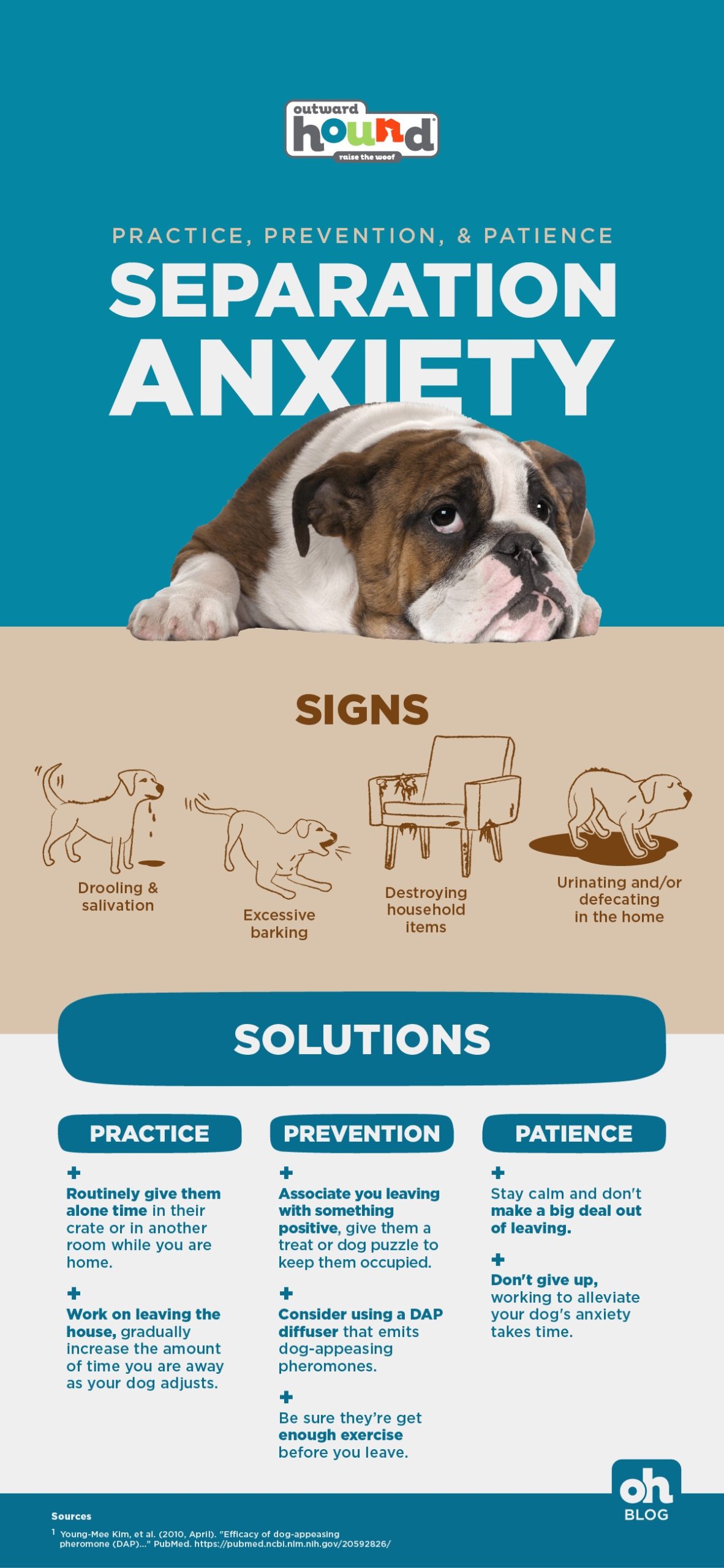With the increase in dog adoptions during COVID-19, it’s important to keep in mind life after quarantine with your new fur friend. Reading up on dog separation anxiety tips once you are no longer trapped inside is the first step toward preventing a mutt meltdown.
Whether that means leaving your pup at home alone for a quick trip to the grocery store or for a long day at work, your new family member may not be as happy as you are when quarantine is over. Their new “normal,” after all, involves spending all hours of the day with you!
So what should you do to help your dog cope with your absence? Here are a few dog separation anxiety tips to work on NOW to help prevent behavior problems later.
Have Realistic Expectations
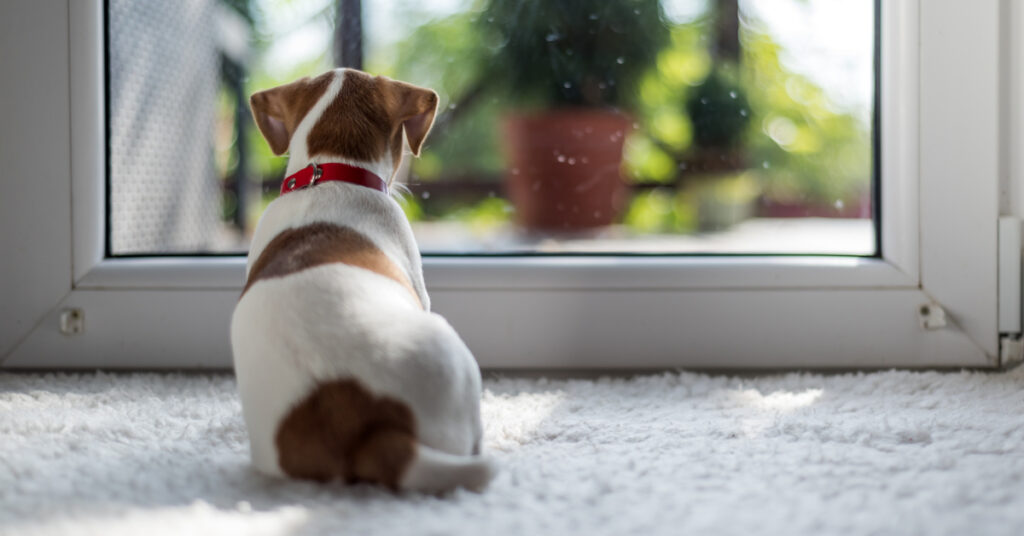
Curbing your dog’s behavior due to separation anxiety isn’t going to happen overnight. Desensitization and counterconditioning techniques take practice, time, and, most of all, patience.
It helps to know the symptoms of separation anxiety. Here are some signs of separation anxiety you might encounter with your dog if they are not used to being left alone for a long length of time:
- Urinating and/or defecating in the home
- Excessive barking
- Drooling and salivation
- Destroying household items
This is what happens with a dog with separation anxiety. Dog owners should not punish their pets for anxious behaviors.
With practice, prevention, and patience, you can help your dog survive post-quarantine alone time.
Give Them Some Independence

Let your pup play or lay in a different room to allow some separation. Gradually spend longer amounts of time in separate rooms to help the adjustment.
If your pup prefers to play, give them a toy to keep them occupied while you work in another room.
Consider putting a DAP diffuser in the room to calm them through the power of pheromones.
Ultimately, letting them go solo for short periods of time will help them get used to being alone for long periods in the future.
Creating a Safe Place With Crate Training
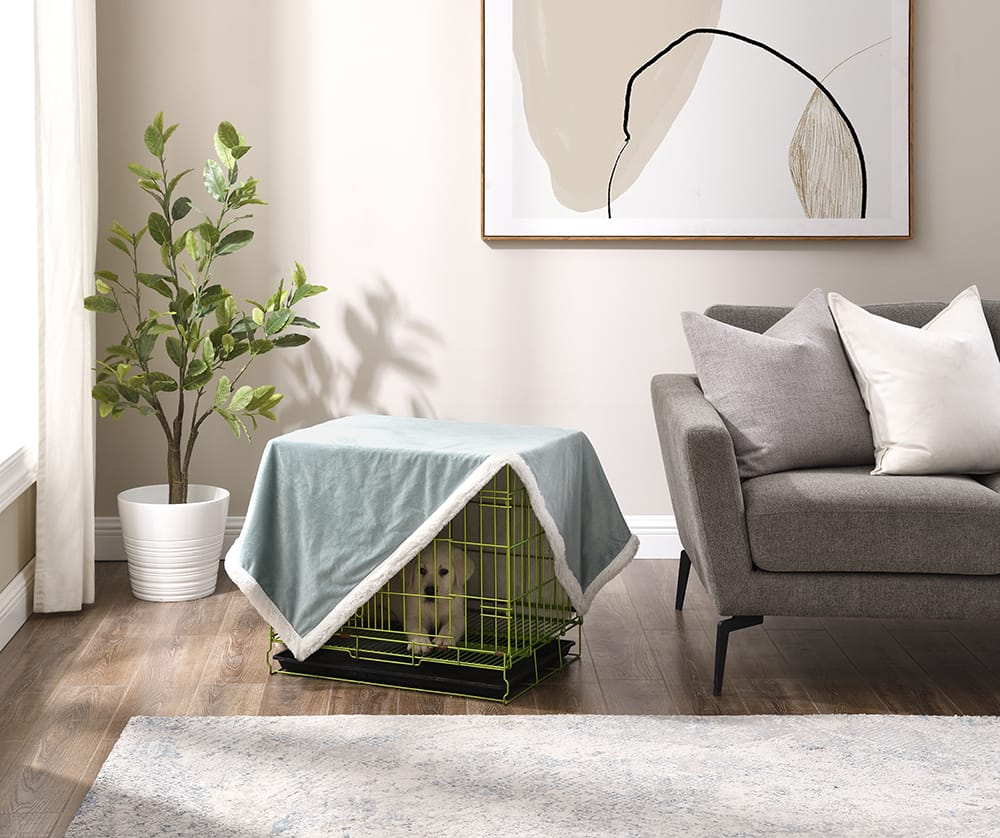
If you live in a studio apartment, for example, and don’t have the space to put your dog in another room for the first time alone, a dog crate is an effective alternative.
Many anxious dogs find safety and security in their crates. Try to confine your dog in their crate for a short amount of time while you are still stuck at home during quarantine. Give them a chew toy or puzzle toy with some ultra-tasty peanut butter or freeze-dried dog treats to keep them occupied.
Practicing crate time will help eliminate the kennel being associated with you leaving the house.
While you’re practicing crate training during quarantine to prevent anxious behaviors, research some of the other benefits to crate training.
Give Your Dog More Physical AND Mental Stimulation
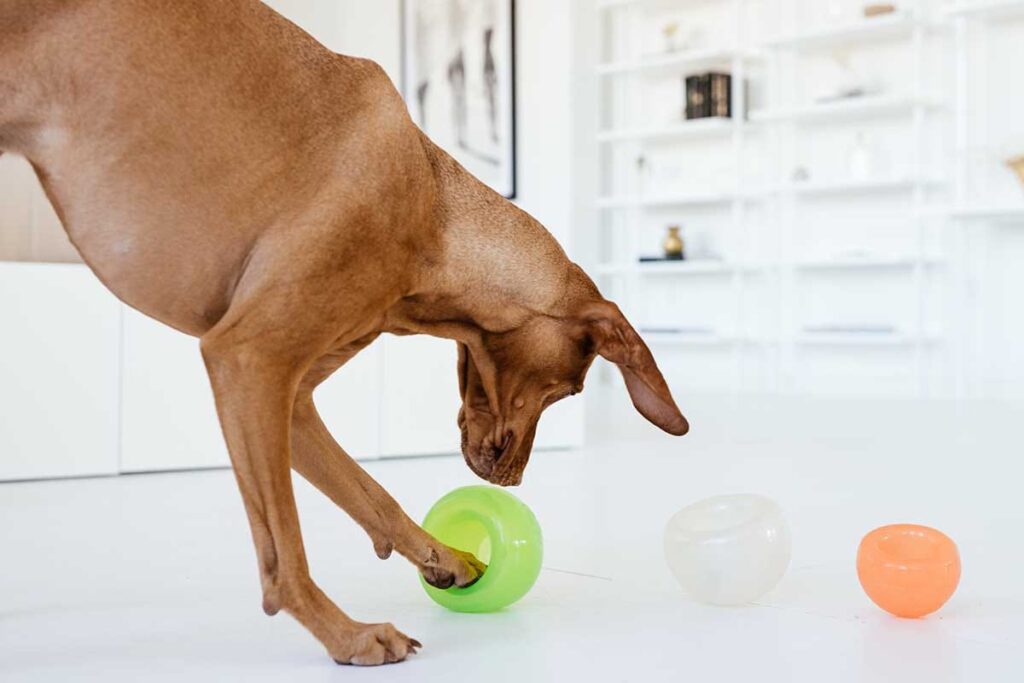
Whether that means more frequent walks, playing fetch outside or letting your pup play treat puzzle games, physical and mental exercises help prevent severe separation anxiety, destructive behavior, and boredom.
Socialization with other dogs is a great way to burn energy as well. Consider daycare or schedule a doggie playdate before heading out for longer periods of time.
Ignore Them
You read that right. Giving your pup a little bit of the cold shoulder is probably easier said than done, but it will be worth it!
Not paying attention to your dog when they follow you around the house can help eliminate attention-seeking behavior and thus prevent separation anxiety.
Over time this will help your dog get used to being alone, as long as you don’t make a big deal of leaving when the time comes. So:
- Give them alone time while you are home in their crate or in another room.
- Practice leaving the house, gradually increase the amount of time you are away as your dog adjusts.
- Stay calm and don’t make a big deal out of leaving.
- Give them a high-value treat or dog puzzle to keep them occupied on your way out the door.
- Consider using a DAP diffuser.
Your dog is smart. They pick up on your departure cues like jingling car keys or putting on your shoes before you leave.
Instead of making them respond in an anxious manner to these cues, give them a high-value treat so they associate you getting ready to leave with a yummy reward. This turns the event of you leaving into something positive rather than stress-inducing.
Reach Out to a Professional Dog Trainer
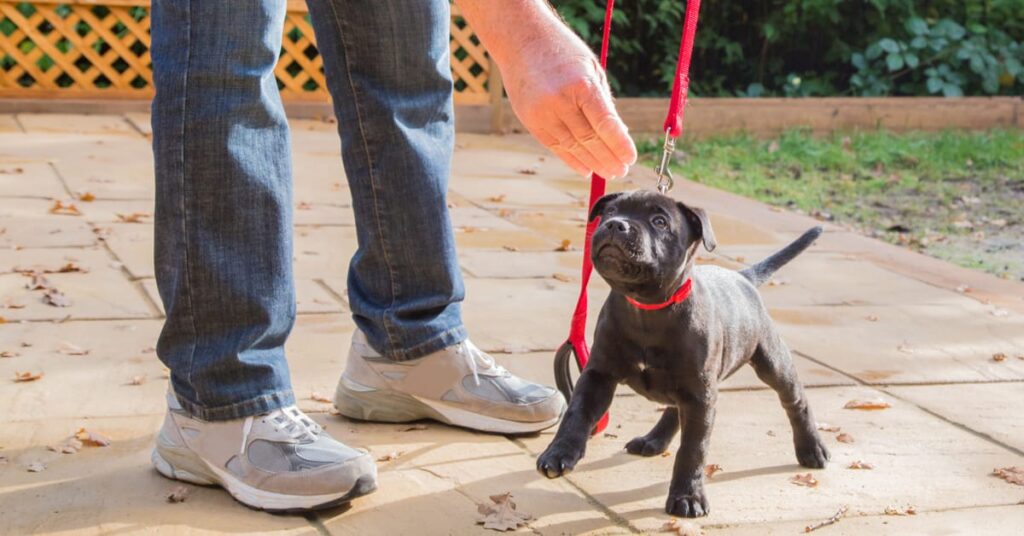
Like many aspects of our lives right now switching to virtual learning during quarantine, dog trainers are no different.
Look for online dog training with an expert who can provide additional tips for how to prevent separation anxiety in dogs. For severe cases you might want to consult a veterinary behaviorist.
Pet parents who implement these tips before restrictions are fully lifted can help prevent separation anxiety once we start to adjust back to our normal daily routine.
For more tips on how to provide a safe environment for your dog when it’s time to leave them home alone during life after COVID, read:
How to Provide a Calm Environment for Your Anxious Dog
